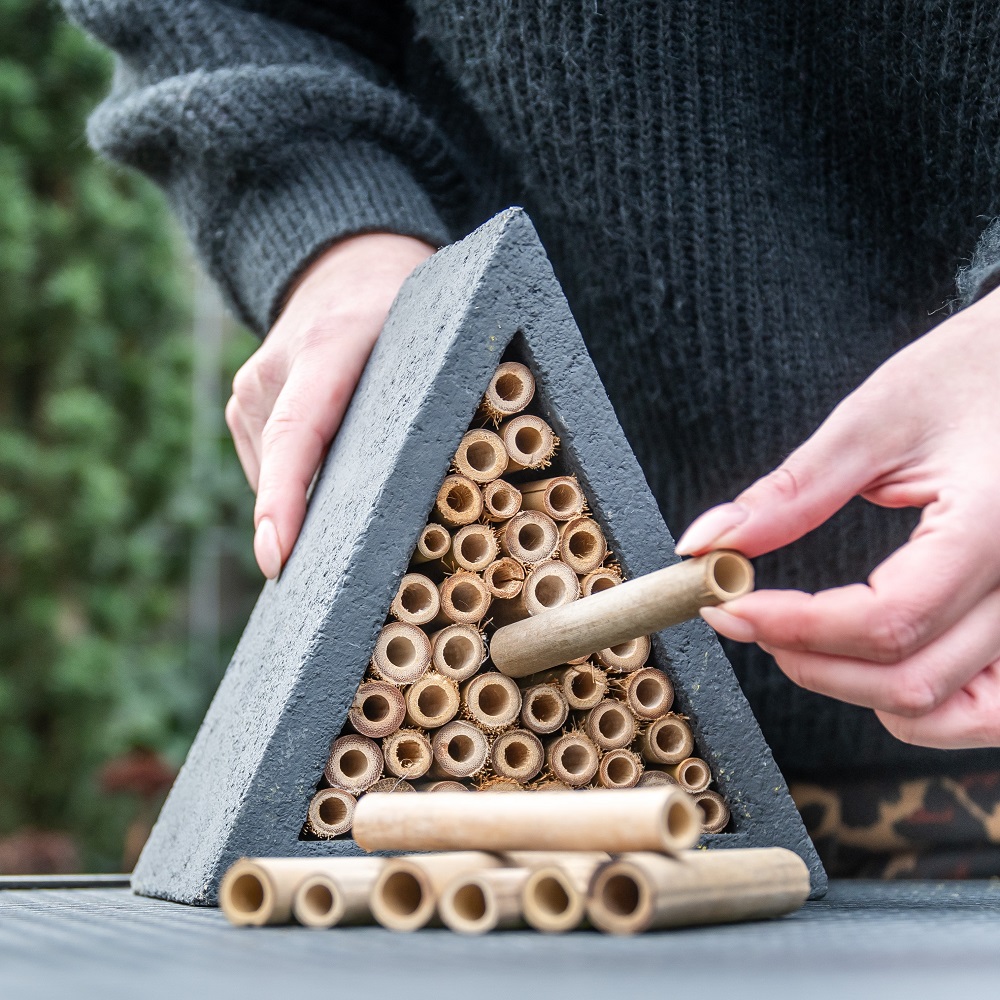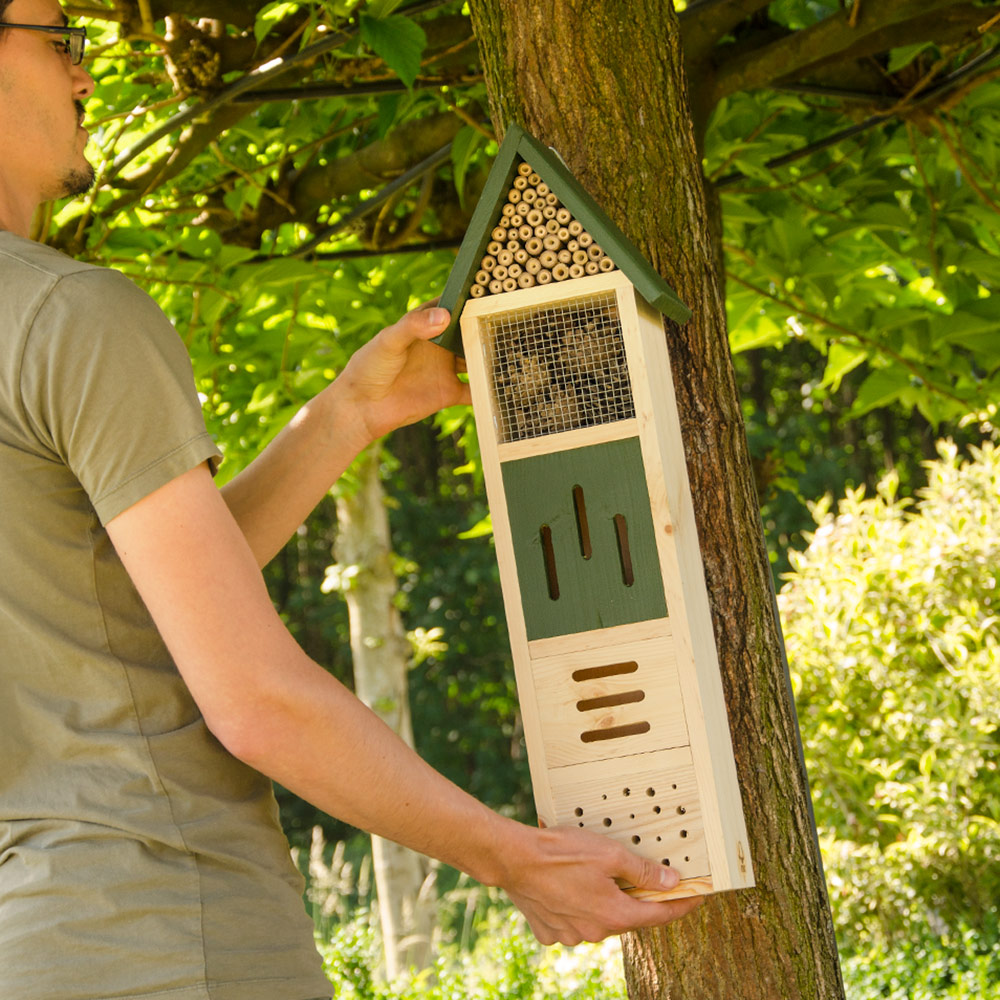Products for Butterflies, Bees & Insects
Do you want to support biodiversity in your garden while enjoying the fascinating world of insects? Read more here.
A bug hotel is the perfect addition to any outdoor space, offering shelter, nesting spots, and hibernation opportunities for a variety of beneficial insects like bees, butterflies, and ladybugs. On this page, you’ll find everything you need to know about bug hotels and how they can transform your garden into an insect-friendly paradise.
What is a bug hotel?
A bug hotel, sometimes called an insect house, is a structure made from natural materials such as wood, WoodStone, bamboo, and pinecones. These carefully crafted shelters provide a safe environment for insects to rest, breed, or hibernate. Depending on its design and the materials used, a bug hotel can attract a wide range of species, each contributing to balance your garden’s ecosystem.
Why should you add a bug hotel to your garden?
Insects are an essential part of the natural world. They not only support biodiversity but also play key roles in maintaining healthy ecosystems. Bees and butterflies are vital pollinators, ensuring flowers and crops thrive. Ladybugs and lacewings keep garden pests like aphids in check, while other insects, such as beetles, break down organic matter, enriching your soil. By placing a bug hotel in your garden, you’re providing these beneficial insects with a safe space to flourish.
Bug hotels are especially important as many insect habitats are being lost due to urban development and intensive farming practices. A single bug hotel in your garden can make a significant difference, creating a sanctuary for these tiny helpers.
Where to place a bug hotel?
Choosing the right location is crucial for making your bug hotel attractive to insects. Place it in a sunny, sheltered spot, as many insects, particularly bees, prefer warmth. A quiet corner of your garden, away from heavy foot traffic, will also encourage them to settle in. Ensure the bug hotel is slightly elevated to prevent moisture from accumulating and avoid placing it directly on the ground. Surrounding it with native plants and flowers will further increase its appeal to visiting insects.
What types of insects can you attract?
The materials used in a bug hotel determine which insects it will attract. Bamboo canes or hollow plant stems are perfect for solitary bees, while drilled wooden blocks offer excellent nesting spots for mason bees. Pinecones and dry leaves create cozy nooks for ladybugs and lacewings, which help control pests in your garden. By incorporating a variety of materials, you’ll create a multi-functional habitat that appeals to different insect species.
When assembling or buying a bug hotel, it’s important to avoid treated or painted materials, as these can deter insects. Keeping the design natural and functional is the best approach to ensure the hotel fulfills its purpose.
How to maintain your bug hotel
Bug hotels are low-maintenance, but a little upkeep can go a long way in keeping them effective. Check the structure annually for damage and replace any worn or decayed materials. After wet seasons, ensure the interior stays dry to prevent mold, which can harm insects. If the hotel is no longer attracting guests, try moving it to a different location in your garden.
Should you buy or build a bug hotel?
Whether you prefer a ready-made option or want to create your own, both choices have their merits. Building your own bug hotel is a rewarding DIY project that allows you to customize it using recycled materials from your garden. On the other hand, purchasing a bug hotel from a trusted provider ensures high quality and expert design. Vivara’s bug hotels are crafted in collaboration with wildlife experts, using sustainable materials to provide a safe and lasting habitat for insects.
Discover Vivara’s bug hotel collection
Vivara offers a range of thoughtfully designed bug hotels tailored to the needs of different insect species. Whether you have a spacious garden or a small balcony, you’ll find the perfect solution to enhance your outdoor space while supporting biodiversity.
Browse our collection today and take the first step toward a vibrant, insect-friendly garden.

























